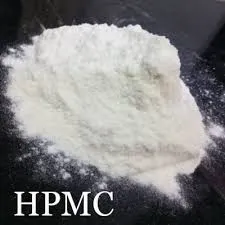
Сен . 25, 2024 07:16 Back to list
Comparing HPMC and HEC for Optimal Performance in Pharmaceutical Applications
Comparing HPMC and HEC A Comprehensive Overview
In the realm of pharmaceutical and industrial applications, Hydroxypropyl Methylcellulose (HPMC) and Hydroxyethyl Cellulose (HEC) are two widely used cellulose derivatives. Their unique properties make them suitable for various formulations, especially in the fields of drug delivery, cosmetics, and food industries. Understanding the differences and applications of HPMC and HEC is essential for formulators looking to optimize their products.
Chemical Structure and Properties
HPMC is derived from cellulose through etherification, introducing hydroxypropyl and methyl groups into the cellulose backbone. This modification enhances its solubility in water and provides excellent film-forming properties. HPMC is known for its viscosity range, which can be tailored by adjusting the degree of substitution of the hydroxypropyl and methyl groups. It is generally non-toxic and compatible with most other substances used in formulations.
On the other hand, HEC is produced by the reaction of cellulose with ethylene oxide, leading to the introduction of hydroxyethyl groups. HEC is also water-soluble and offers thickening properties but holds a different viscosity profile compared to HPMC. While HEC primarily serves as a thickener, HPMC excels in applications that require controlled release and film formation.
Applications in Pharmaceuticals
In the pharmaceutical industry, HPMC is frequently utilized as a binder and film-coating agent in tablet formulations. It aids in controlling the release rates of active ingredients, which is vital for prolonging therapeutic effects. HPMC is also employed in hydrogels and matrix systems for sustained drug delivery, making it a preferred choice for extended-release formulations.
hpmc vs hec

Conversely, HEC is predominantly used as a thickener and stabilizer in liquid preparations, including creams and gels. Its role is crucial in maintaining the consistency and stability of these products. HEC's ability to improve the texture and feel of topical formulations enhances user experience, making it a go-to choice in cosmetic applications.
Impact on Consumer Products
Both HPMC and HEC are integral to consumer products. In food processing, HPMC serves as an emulsifier and thickener, while HEC is primarily used in sauces, dressings, and ice creams to improve texture and viscosity. Consumers often prioritize products with improved mouthfeel and stability; thus, the use of these cellulose derivatives can enhance overall satisfaction.
Environmental Considerations
Sustainability is an increasingly important factor in product development. Both HPMC and HEC are derived from renewable resources, and their biodegradability makes them environmentally friendly options. As the industry moves toward greener alternatives, these cellulose derivatives will play a pivotal role in meeting consumer demands for eco-conscious products.
Conclusion
In summary, while HPMC and HEC share some similarities as cellulose derivatives, their distinct properties and applications set them apart. HPMC is best known for its binding and controlled-release capabilities in pharmaceuticals, whereas HEC excels in thickening and stabilizing applications. Understanding these differences allows formulators to select the right ingredient for their specific needs, ultimately contributing to better product quality and consumer satisfaction. As industries continue to innovate, both HPMC and HEC will remain essential components in the development of advanced formulations.
-
The Widespread Application of Redispersible Powder in Construction and Building Materials
NewsMay.16,2025
-
The Widespread Application of Hpmc in the Detergent Industry
NewsMay.16,2025
-
The Main Applications of Hydroxyethyl Cellulose in Paints and Coatings
NewsMay.16,2025
-
Mortar Bonding Agent: the Key to Enhancing the Adhesion Between New and Old Mortar Layers and Between Mortar and Different Substrates
NewsMay.16,2025
-
HPMC: Application as a thickener and excipient
NewsMay.16,2025
-
Hec Cellulose Cellulose: Multi functional dispersants and high-efficiency thickeners
NewsMay.16,2025







